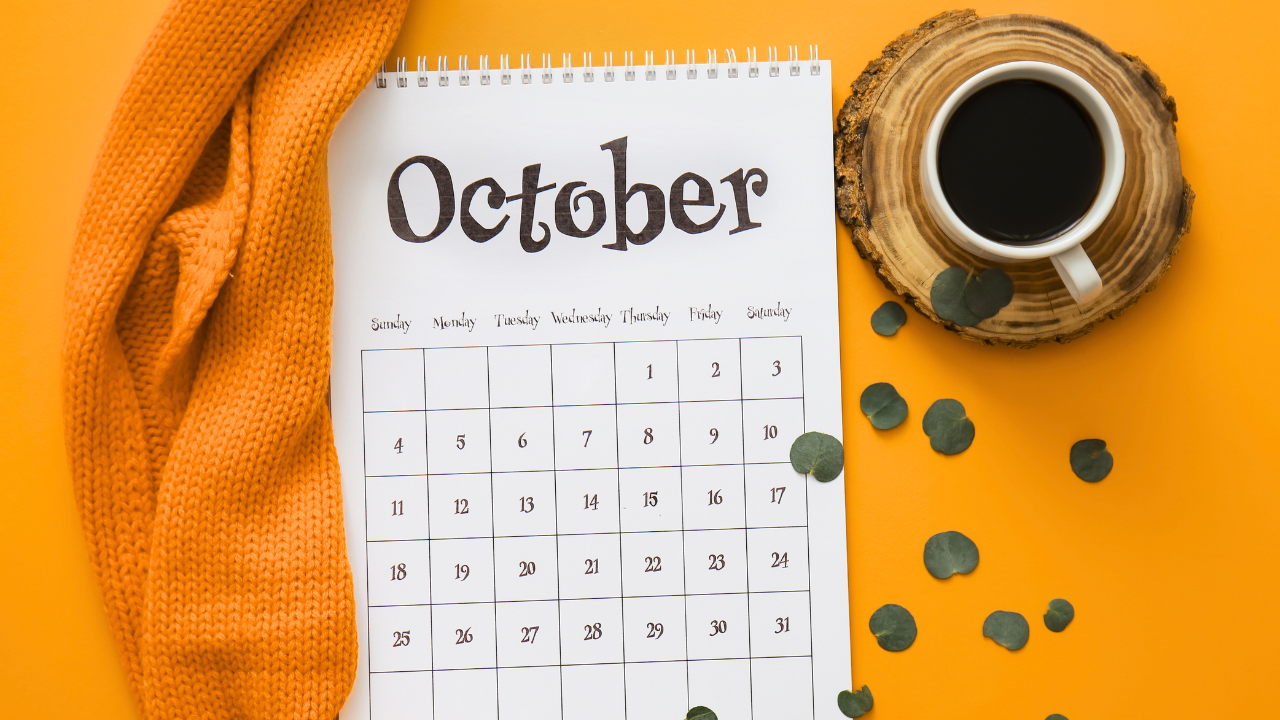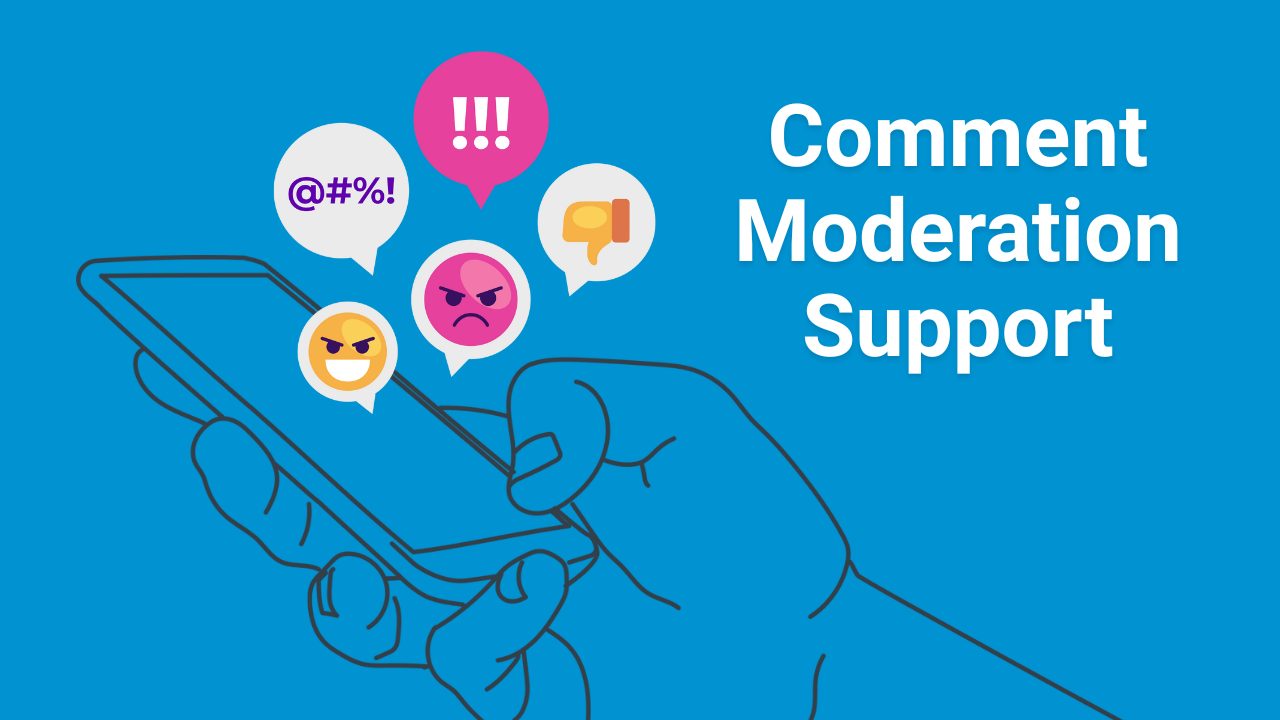
10 crisis communications tips for government social media professionals
Jun 26, 2023Contributed blog by Angie Ramirez, Freelance Writer at Government Social Media
If you watched the Golden Post Awards at GSMCON2023 this year, you might remember me as the frazzled wide-eyed girl whose voice shook as she accepted the “Best Use of Social Media in an Emergency” award. The emotion you heard was raw and real because the truth is, this award meant a lot to me and my team.
While socialgovs have an important responsibility to keep the public informed every day, there is no more critical time than during a crisis.
Some background
One of the most impactful moments of my career happened shortly after I landed my dream job as the City of Tampa’s Social Media Strategist. I was still riding the high of reaching my internship goal (which was to get the City of Tampa’s Instagram account to 1,000 followers), and I was giddy at the thought that I was getting paid to “play” on social media for the City I loved.
About 10 weeks later, Tampa was significantly impacted by Hurricane Irma.
Needless to say, I was way in over my head.
Hurricane Irma opened my eyes to the power of social media in an emergency. My job wasn’t to “play on Facebook.” It was to help residents find their evacuation zones. Report concerns about downed trees and dark intersections that posed serious safety hazards. It was helping residents find emergency shelters, sandbags and a hot meal while their power was out.
I went from posting GIFs to spending the night on the floor of the Emergency Operations Center (EOC), tweeting until my fingers went numb, reading DMs until my vision blurred and working tirelessly as the frontline of Tampa’s digital communications when our community needed information most.
This experience back in 2017, taught me so much about crisis communications, and it set the tone for my career. It helped me understand the importance of digital media and the responsibility I have as a government communicator to do my job well.
Fast forward five years later, with Hurricane Ian making a beeline for Tampa, I found myself spending the night at the Emergency Operations Center once again – this time on an air mattress (I was better prepared).
Hurricane Ian
As Hurricane Ian picked up speed in the tropics, all eyes were on Tampa Bay – one of Florida’s most vulnerable regions to hurricane impacts. Virtually every national news station, from CNN to Fox News, MSNBC to the Weather Channel, and more, ran round-the-clock coverage of Hurricane Ian, and Tampa was at the center of the media storm.
This wasn’t Tampa’s first hurricane rodeo, but Hurricane Ian was unique. For starters, hurricane models projected that Tampa Bay would experience a direct hit from the storm — something that hasn’t happened in over 100 years. In a worst-case scenario, Tampa would have experienced up to a 15-foot storm surge that would flood nearly all of South Tampa, downtown and other low-lying areas.
With both Hurricane Irma and Hurricane Ian, Tampa got extremely lucky. We weren’t hit as hard as some of our neighbors. But, it was still a major learning experience and a massive effort to ensure communications were ahead of the storm and residents were ready for whatever came our way.
Now that I have two near-miss hurricanes and six years of government communications experience under my belt, I’ve learned a few things. To help my fellow socialgovs, if you ever find yourself in a crisis, I’ve outlined my top 10 crisis communications tips for government social media professionals to use in an emergency below:
1. Establish official channels early on
Establishing a primary channel for where your crisis communications come from makes it easier for your residents to know where to go to find critical information as they need it. At the City of Tampa, we had to make a game-time decision about this based on our staffing limitations. In the past, we promoted our Emergency Management’s social media channels as the primary channels for emergencies (@AlertTampa).
However, we quickly realized that there were not enough staffing resources behind the @AlertTampa account to keep the information up to date. For this reason, we decided to pivot and promote the @CityOfTampa accounts as the primary official channels during this emergency. This is where we already had the largest built-in following of Tampa residents (over 500k followers), and we had two staff members (myself included) who could monitor and post. Important messages were then shared to the @AlertTampa account, @JaneCastor (our mayor), @TampaPD, @TampaFireRescue, @TampaParksRec, and all other affiliate accounts.
2. Establish a look and feel for emergency comms (Canva is a great tool for this!)
One of the most polished things we did at the City of Tampa during Hurricane Ian was to incorporate a consistent look and feel into our emergency messages. Our graphic designer had previously created a brand kit for Alert Tampa (our Emergency Management system). He imported the fonts, backgrounds and colors into Canva templates so that they could be utilized by our PIOs and anyone else in the marketing department.
Along with having a streamlined approach to graphics, it’s also important to include alt text as part of your agency’s accessibility strategy. In an emergency, it’s critical that communications are reaching everyone in your audience. Remember that if you have text on a .JPG graphic, a screen reader can’t read it — copy that text into the alt text of the post to ensure your content is accessible.
By maintaining consistent branding, governments can ensure that their emergency communications are instantly recognizable. It also creates an external perception that your team is prepared and well-organized (even if it feels like you’re running a million miles per minute).

3. Expect to be flooded by DMs
During the 7-day period leading up to and following the storm, the City of Tampa received a 5,437.3% increase in engagement on Facebook, Twitter, and Instagram (over 1.2M engagements). The City also experienced a 992.5% increase in received messages (over 18.8k) during this period.
I’ll never forget the Monday before the storm when the first evacuation orders were issued, and the sheer number of notifications that were blowing up my phone. There was a constant stream of new messages, and it can get overwhelming if you have a small team, or for some cities a team of one. Finding additional staff that you can bring in to monitor social media when things get out of hand can be a huge help.
4. Utilize short-form video
Short-form video is king right now, and that’s no different in an emergency. Short-form video, including Instagram reels and TikTok, has the power to reach a wider audience. It also helps you reach younger demographics who may not be following your Facebook or Twitter accounts.
Here are some examples of how the City of Tampa used short-form videos during Hurricane Ian.
- Behind-the-scenes storm prep: We utilized Instagram reels to showcase the hard work our stormwater crews were doing before the storm to help get our city ready. The positive comments are heartwarming and set the tone early on that Tampa was being proactive.

- How to find your evacuation zone tutorial: This video offered real value to residents by explaining how they can look up their evacuation zone from their smartphones. We were receiving tons of questions from residents who didn’t know how to find their evacuation zones. This helped clear up the confusion so residents could get this critical information.

- Storm updates with Emergency Coordinator John Antapasis: One of the fastest ways to utilize short-form video is just to film someone speaking direct-to-camera with critical information. Take advantage of Instagram/TikTok’s built-in caption features for accessibility and to make your video more engaging if someone is watching without sound.

- Mayor Castor reporting live from Bayshore Blvd: This Instagram Reel and TikTok showcased Mayor Jane Castor’s proactive leadership as she went out before the storm to assess potential threats. In this video, she visited Bayshore Blvd, where Hurricane Ian sucked all the water out of the bay, creating a threat of storm surge. Having her speak direct-to-camera shows that she embraces a boot-on-the-ground leadership approach.

- Push crew appreciation: This video was posted the morning after the storm to showcase the hard work of the push crews who deployed at dawn to begin removing debris. Getting this video up ASAP reassures the public that their city is working hard to respond to damages.

- First Responder appreciation: This TikTok and Instagram Reel showcased first responders who were heading out to south Florida to help neighbors in need who were hit harder than Tampa by Hurricane Ian.

5. Share the behind-the-scenes of what your city/county/state is doing to prepare
Residents just want to know that their government has their backs. During Hurricane Irma, we showcased various efforts City departments were making to prepare for the storm. We also visited the Emergency Response Centers, where push crews were stationed, ready to deploy first thing after the storm. This post, for example, offered a recap of most of the City of Tampa’s actions before the storm. It received a lot of positive engagement and appreciation from residents.
We also posted ride-along Instagram stories with Mayor Jane Castor as she went out to assess threats before the storm, thank the push crews and assess damages after the storm. This exclusive, behind-the-scenes look at City government makes it more personable and reminds residents that folks are working hard to serve their community.
6. Provide real-time updates
Mayor Jane Castor, the Tampa Police Chief and Tampa Fire Rescue Chief held a joint media briefing from the Emergency Operations Center twice daily. The City of Tampa streamed these briefings on Facebook Live to help keep the public informed.
Keep in mind, if you plan to stream live during an emergency, test equipment and internet connection. We learned the hard way that the building we were in didn’t have a good signal or Wi-Fi. The live stream from the first press conference disconnected. Luckily, we had a video producer filming the press conference, and we were able to upload a recording within an hour. Mistakes will happen, learn from them and do what you can to correct them as quickly as possible.
7. If you make a mistake, fix it ASAP
And, that leads me to my next tip. In an emergency, especially when you have a small team and are running on lack of sleep, mistakes happen. The important thing is to correct them as quickly as possible.
Before making a social media post, take a breath and think to yourself: How would I read this if I was a usual resident? Double-check for spelling/grammar errors, or better yet, have someone else proofread the post before it goes out. If you do make a mistake, apologize and correct it ASAP.
One mistake I made during Hurricane Ian occurred when I was scrambling to post about a mandatory evacuation order issued by the county. I didn’t have time to make a graphic, so I visited the county’s evacuation zone map and posted a screenshot of the map with the graphic. I didn’t notice that in the screenshot I posted, the legend wasn’t showing. It wasn’t my proudest moment, and people weren’t happy. Followers were quick to call us out on the missing information. Sure, the information was there in the link, but when it comes to social media, visuals are key, and they need to be as clear as possible.
Luckily, I was monitoring the comments and noticed the confusion immediately, so I was able to update the post with a legend in the caption. I learned my lesson the hard way, and now I’ll be extra careful when I post screenshots, especially if I’m moving quickly.
8. Join viral/national conversations
One fun moment during Hurricane Ian was when Mayor Jane Castor received a call from the president during a live press conference. All the media stations picked it up as she excused herself from the podium to answer the president’s call. The clip quickly started circulating online and began going viral on TikTok.
We were able to leverage this iconic moment by creating our own TikTok video, which currently has over 400k views. The video solidified the narrative that our mayor is a superstar, and so are all of our City employees, always ready to answer the call to serve our community.
During an emergency, your municipality may be at the center of national conversations. Social listening is key to picking up on these conversations and leveraging them to your advantage.

9. Consider using Local Alerts (but GET READY)
Facebook’s local alert feature is a tool that governments have exclusive access to in order to keep their community informed in an emergency. This is an extremely powerful tool because it sends a notification to every page follower and gets information out fast. Nextdoor also has an Emergency Alerts feature for public agencies.
While these features can help disseminate information quickly, with great power comes great responsibility. My first experience using a local alert was during COVID-19 when the Mayor issued a “Stay at Home Order.” We were immediately flooded with notifications, comments, DMs and so many messages that our small team was not able to keep up with the inbound activity. This is why I say take advantage of this feature, but make sure you are prepared to monitor and respond to an influx of notifications.
10. Beware of burnout
My last tip goes directly to all my fellow government communicators. Burnout is real, and I know many of you have experienced it over the past few years. Between COVID-19, civil unrest, political polarization, and so much more, this industry can be taxing on one's mental health. That’s even more true during an emergency.
During Hurricane Irma in 2017, I gave my all to emergency comms leading up to the storm. Little did I know that the real work began post-storm, answering questions about debris cleanup, trees in roadways, dark intersections, loss of power and all the other long-lasting impacts. The recovery from Irma took months, and this is something I wasn’t ready for.
This go around with Hurricane Ian, Tampa got lucky that we don’t have as much damage as we did during Irma. But, not all cities were as fortunate. Fort Myers, Punta Gorda and Naples were hit hard and faced months of recovery.
If you find yourself responding to an EOC, please take care of yourself. Remember to eat, remember to sleep. I wish I were kidding when I say that my team applauded after I had a cup of coffee and a shower one morning at the EOC. Exhaustion can hit you hard, and you can’t help if you’re running on fumes. That’s when mistakes happen and when your own health is at risk.
Final thoughts
Overall, this experience was another invaluable learning opportunity as a government communicator, and I was extremely honored and humbled to take home a Golden Post Award for my hometown. Our social media strategy wasn’t perfect – we learned lessons along the way – but overall, I’m so proud of what my City of Tampa team accomplished to keep our community informed. And, while I hope to never be in another hurricane emergency again, I know that I'll be ready if one comes my way.
While this crisis was a hurricane, many of these tips apply to other emergencies, too – from natural disasters to active shooter situations, public health emergencies, and more. While the situations may be unique, the goal is the same: to lead the narrative and keep your community informed.
Here’s to hoping that you never need these tips, but if you find yourself in a crisis just know, you’ve got this!
Meet the author
Angela Ramirez (Pitts)
Freelance Writer - Government Social Media LLC
Angela Ramirez (Pitts) is the Communications Strategist for the City of Tampa. Her primary responsibilities include managing the City’s social media profiles and assisting the Marketing & Communications department with all external communication needs. Angela helped grow the City’s Instagram profile from less than 1k followers to over 100k in 5 years. She also helped the City of Tampa become one of the first municipalities to join TikTok. Her work in social media has been featured by national outlets, including CNN Politics and Smart Cities Drive.
Government Social Media® empowers government professionals to achieve mastery in social media through conferences, online training, and association membership. Best communicate with the public you serve and get connected with fellow socialgovs by registering for the 2026 Government Social Media Conference happening in New Orleans, LA and virtually from wherever you are! Join the free GSM Network for text-only chats on socialgov topics or access the Government Social Media Association (GSMA) for regional virtual meetups and educational webinars.










